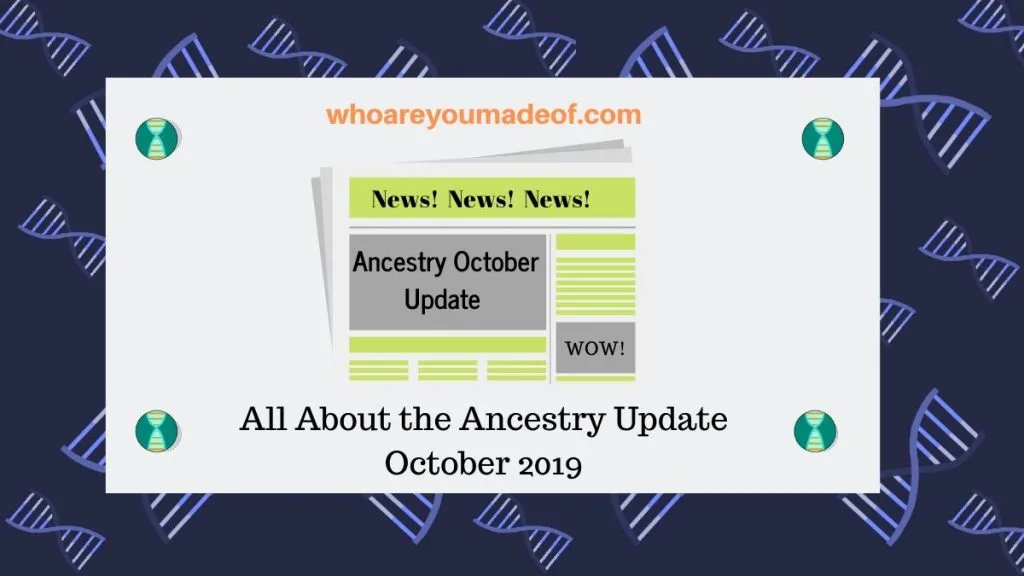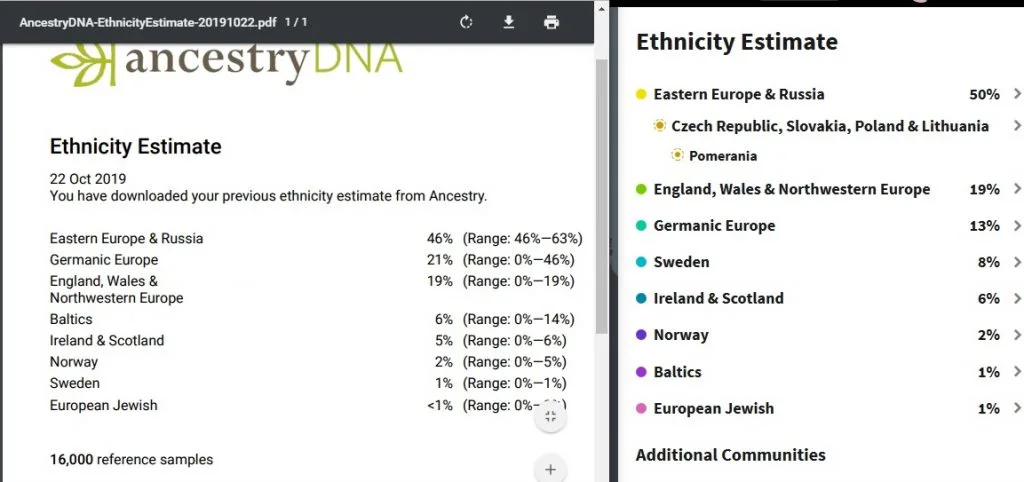Did your Ancestry DNA results change in October of 2019? This post will help you understand why and how your results changed. Plus, I'll also show you an example of updated Ancestry DNA results.
Every time Ancestry DNA results are updated, lots of questions come up. Are the results accurate? Why don't they match your family? Will they change again?

My experience so far with the latest update has been very positive. All of the updated results that I have seen have more closely matched known family history, and I am so excited about sharing more about updated results with you.
Important: Ancestry DNA is rolling this update out over time beginning in October 2019. Read more about this in the post below.
Why did your Ancestry DNA results change?
If your Ancestry DNA results changed, does it mean that your previous results were wrong? As Ancestry DNA commonly says, your DNA doesn't change, but the science behind your results often does.
Ancestry DNA consistently works to provide the most accurate ethnicity estimates, and this often means that previous estimates will need to be updated. The October 2019 Ancestry update is not the first time that ethnicity results have been updated, and it is unlikely to be the last.
To find out more about the previous major update, you can you the following post. It's sometimes fun to see how the accuracy of our results has evolved:
Major points from October 2019 Ancestry DNA Update
The October 2019 update features more specific ethnicity regions, an expanded reference panel, and more global regions that have not been covered in previous releases.
For example, the new update contains brand-new regions for Pacific Islanders like those with ancestors from Guam. Those with African heritage might be interested to know that Ancestry DNA now includes new regions like Ethiopia and Eritrea, as well as Eastern Bantu.
This update is huge news for people with indigenous North or South American ancestry. The previous Ancestry DNA algorithm only included two main regions (i.e. North or South American) for this population group. The latest update now includes 11 main regions.
The October 2019 Ancestry DNA update delivers more accurate results based on a reference panel made up of more than 40,000 DNA samples, which is more than twice as many samples that were used for the previous reference panel. The increased size of this reference panel includes more people from specific regions, and allows for more accurate results.
What's a reference panel?
A reference panel refers to DNA samples given by people with deep, proven ancestry in a particular region. Ancestry DNA uses advanced technology with these DNA samples to determine your unique ethnicity estimate.
Example of updated Ancestry DNA results
Some of us might only notice minor changes in our results. Others might see a pretty big difference in percentages reported in a particular region.
No matter if you see big or small changes in your results, it's important to understand that these results are likely more accurate than the previous ones. The science behind ethnicity or ancestry estimates is continually developing and improving.
If you have roots in any of the new regions added by Ancestry DNA, however, you might expect to see larger percentages allocated to these new regions. Additionally, you might expect to see big changes if Ancestry DNA added lots of new samples to a region's reference panel.
The image below shows an example of updated Ancestry DNA results compared to the previous ethnicity estimate. I would classify the updated results below as "minor changes", since the regions are generally the same, but the percentages have been adjusted.
(The old results are on the left, and the new ones are seen on the right)

From the updated results above, I see that the regions are exactly the same, but the percentages have been changed in almost every region. Ancestry DNA seems more confident that the test taker has European Jewish DNA and more Swedish DNA than previously reported, for example.
Even though ethnicity estimates are not a 100% guaranteed "exact science", and will never match our family tree, the expanded number of DNA samples included in the reference panel should make us have more confidence in our updated Ancestry DNA results.
How to get the Ancestry October 2019 update
Ancestry DNA is rolling this update out in stages and will automatically update your account. If you don't see the update yet, be sure to log back in regularly to check for it.
Ancestry DNA is giving individual attention to each updated result, so it might take some time for yours to update.
How cool is it that our DNA results are continually updated with the latest science?
Is your updated ethnicity estimate accurate?
While ethnicity estimates are lots of fun and can be helpful in guiding family tree research, we should keep in mind that it is an evolving science. With that said, ethnicity estimates are extremely accurate to the continent level, and very accurate at the regional level.
The best way to learn about your recent and distant ancestors is to begin building your family tree and performing a careful analysis of your DNA matches. Your DNA match list is a valuable source of information.
Conclusion
I hope that this post has helped you understand more about the Ancestry DNA October 2019 update, what you might expect in your own results, and when your results will update. If you have any questions about something that you read in this post, or if you would like to discuss your own updated results, please join us in the discussion below.
Thanks for stopping by today!

